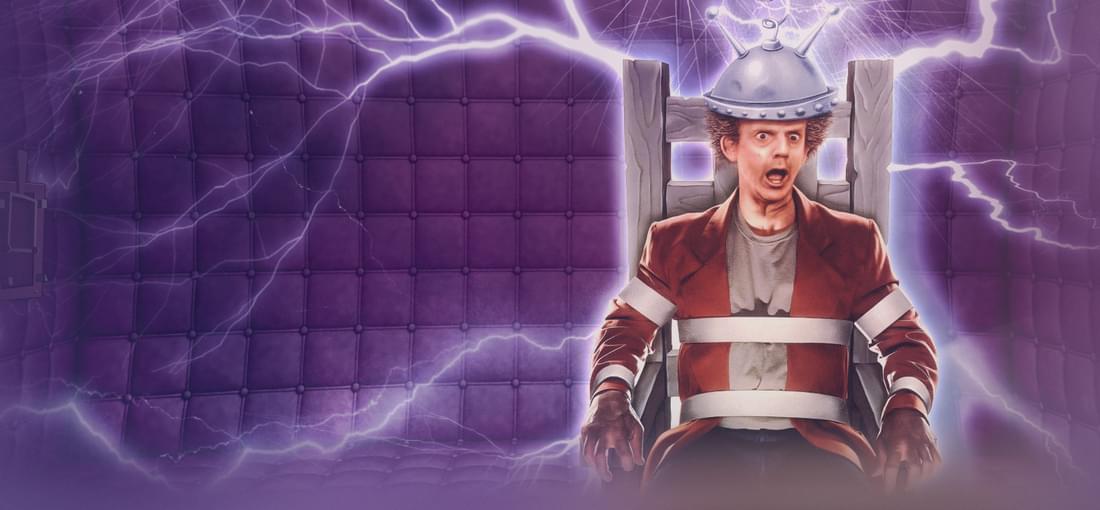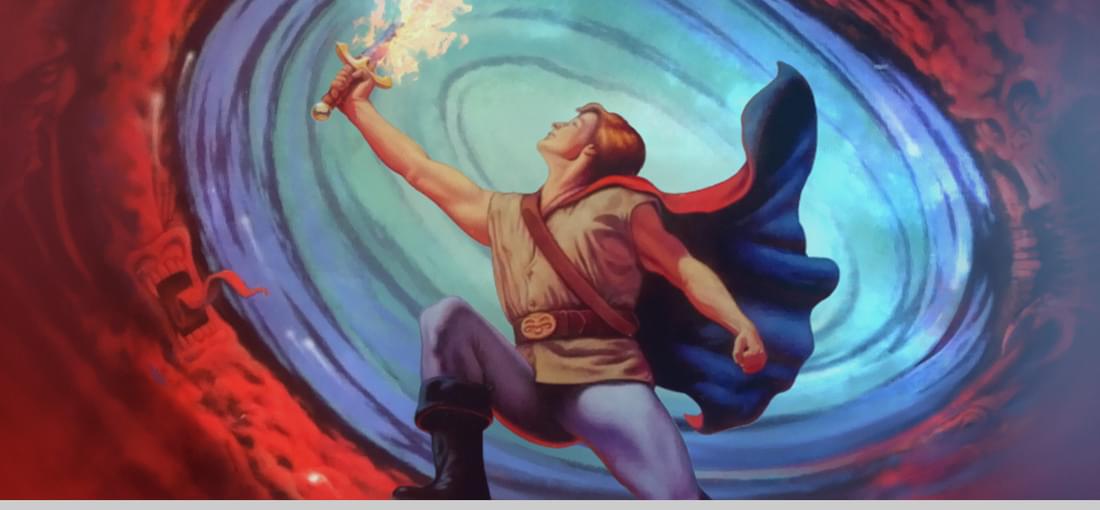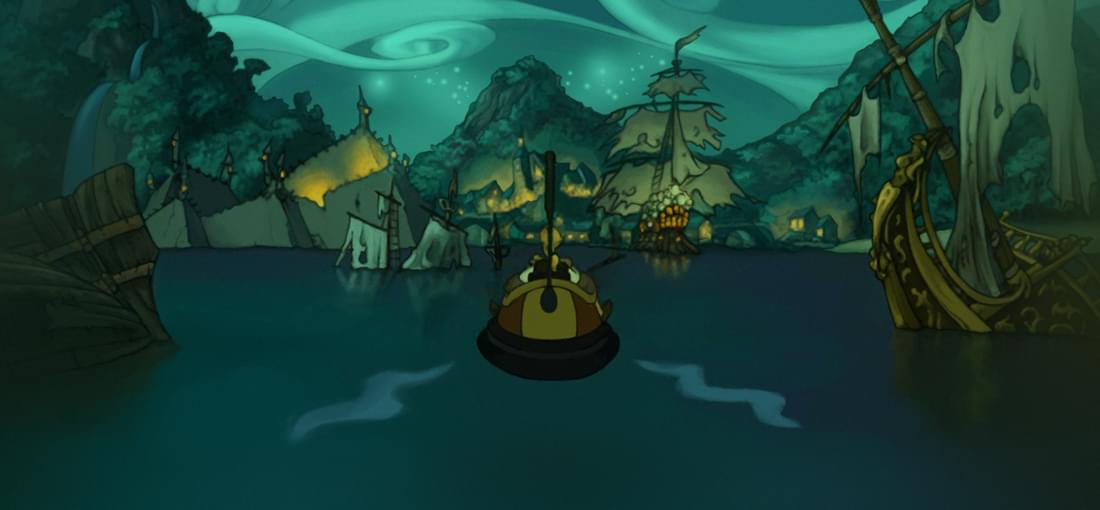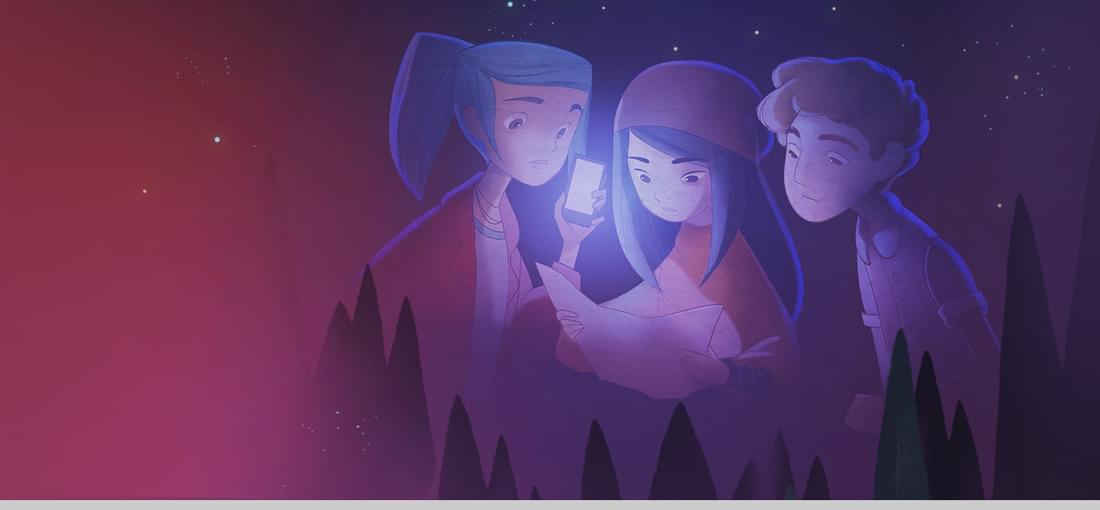

As a fan of Dave Gilbert's 'Blackwell' series, I decided to play 'The Shivah' to see where his professional independent game designing career began. Although 'The Shivah' is a comparatively short game compared to his recent projects, it's still very enjoyable. How often do you see a rabbi as a starring protagonist in a video game? While I wrongfully thought this game explores the rabbi's inner conflicts about his own faith, and instead found myself playing detective as the rabbi, I was very pleased with the puzzles and the multiple endings, for the rabbi's actions do indeed speak louder than his words or sermons.

I remember seeing an ad for 'Loom' in Compute! magazine back when it first came out. I didn't understand what it was. All I knew was that it was not as appealing as the Sierra games that I was playing and gave the game no thought. Oh naive I was back then! 'Loom' is an adventure game gem! While it is a short point-and-click adventure game, it is enchanting and wondrous. The game was made more special by the absence of a verb menu like in other games by Lucasfilm Games or LucasArts. Instead, playing as a young Weaver (wizard) named Bobbin Threadbare, you learn threads (musical notes) that you can string together to form drafts (a spell made of 4 musical notes). You use drafts to interact with people and objects in your surroundings. The puzzles in 'Loom' are quite easy to solve if you know what drafts to learn and play (cast) on your distaff. You will have musical notes to guide your learning and casting in Practice and Standard levels of difficulty. In the Expert level, you'd have to learn and cast by ear. I played 'Loom' at the Expert level and relished the extra challenge, especially given my love for music. Regardless of your familarity with music, finding the correct draft to cast does require some imagination and lateral thinking at times. It's a shame that 'Loom' is such a short game, but it is a rewarding and memorable one. Any fan of classic adventure games should play 'Loom' if he/she has not done so already!

I remember seeing ads for 'Toonstruck' when it first came out. For some reason, it didn't pique my interest. Perhaps it was the uninformative advertising and box art, or perhaps I thought the idea of a real man trapped in a cartoon world like 'Who Framed Roger Rabbit?' and 'Space Jam' to be overdone. Anyhow, it was not until recently when I started watching and reading PC adventure game retrospectives that 'Toonstruck' caught my attention. It's too bad 'Toonstruck' never caught on with the general audience. It's a good game, and it's not a bad looking game from the mid-1990s. The star-studded cast for both physical and voice acting is appealing, and the colourful presentation is beguiling. The puzzles are a bit on the easy to moderately easy size, with a few obtuse ones that become clear if you follow cartoon logic. With a great cast, nice graphics, mature humour and entertaining inventory puzzles, it's truly a shame that the publisher, Virgin Interactive, gutted the game in half. 'Toonstruck' ended with a cliffhanger. While the ending is serviceable, it just leaves you craving for more and some resolution to the story. Because of that, as fun as 'Toonstruck' is, it is an incomplete gaming experience. Unfortunately, 'Toonstruck 2' is nowhere in sight at the time of this review and we'll just need to keep petitioning or pestering someone to release the assets that were already completed back in the mid-1990s. Until then, 'Toonstruck' is really worth checking out, even if it's not as stellar as adventure titles from LucasArts or Sierra.

'Quest for Glory' is one of the best Sierra adventure game franchises. While Roberta Williams might have been a pioneer storytelling in graphic adventure games, Lori and Corey Cole helped perfected it. In fact, 'QFG' exceeded 'King's Quest' in fantasy storytelling in every way. The Coles incorporated folklores and mythologies from various cultures into the storylines in a cohesive, meaningful and respectful ways. At the same time, 'QFG' featured some of the funnier writing -- mostly in forms of puns -- in Sierra adventure games. 'QFG' also featured design elements that were new in graphic adventure games at the time. These included the ability to play as one of three or four character classes (i.e. Fighter, Magic User, Thief, and later Paladin), the freedom to build your character's skill levels as the player sees fit, a meaningful and impactful day/night cycle, sensible puzzles that could be solved in different ways, as well as the options to export and import your character that you worked hard on building. The latter helped 'QFG' become an epic adventure game franchise that it is remembered for today. My current review of 'QFG' is based on my playthrough as a magic using Fighter turned Paladin. At one point in my youth, I also completed 'QFG1' as a magic using Thief with ability to parry. Below is what I think about each 'QFG' game: QFG1: My favourite of the 'QFG' games because of the freedom with which I got to explore the land of Spielburg. I enjoyed how I was not pressured by in-game time to complete quests and I could build up my character at my own pace. The story was whimsical and simple, and certainly not the strongest in the franchise given the flexibility and openness of the game. I loved the graphics in the VGA remake. QFG2: This was my first 'QFG' game in my youth, but I didn't know how to navigate the city well enough to make any meaningful progress back then. It had one of the better stories in the franchise, but the gameplay was much more linear linear than 'QFG1', especially during the last third of the game. Navigating your character in 'QFG2' could be challenging with the weird, questionable perspective changing layout. QFG3: As an adventure game, this was the weakest of the first four 'QFG' games, but it also had an interesting story that looked more into character motivation than in other games. I didn't feel like that was as much to do in 'QFG3' as in previous games, but it still afforded me the opportunities to build my Paladin character. I loved the grandness of the Tarna/Fricana setting, and welcomed the more leisurely change of pace. QFG4: The lessons learned from previous 'QFG' games allowed the designers to create what I believe to be this close-to-perfect ‘QFG’ game in the franchise. 'QFG4' played a bit more like 'QFG1', but with some time constraints like in 'QFG2' and 'QFG3'. It had an intriguing story, with weirder and wackier characters than before. It was tonally different enough for the game (franchise) to stay fresh. I didn't like the close-up character portraits as much as I loved the dramatic sceneries. The combat system was the worst of the five, and took some time getting used to. QFG5: This game felt more like a light RPG than a classic point-and-click graphic adventure game. I wasn't a fan of the graphics and interface. The 3D graphics made the game look cheap and lose the fairytale whimsy that previous games had. Battles could be challenging because of the zoomed-out camera angle. I often found myself clicking on the wrong “pixel” during larger battles. The story was okay, but enough for me to conclude my character's epic adventure. Overall, 'QFG' is definitely worth your valuable gaming time. There has been no other graphic adventure game quite like this since. With a great combination of adventuring, puzzles, humourous writing, I highly recommend 'QFG' to any fan of point-and-click adventure games.

It's been so long since I last played 'The Curse of Monkey Island'! What a great time to revisit this gem now that it is available on GoG. After the divisive conclusion to Ron Gilbert's 'Monkey Island 2: LeChuck's Revenge', it's hard to imagine how to continue the 'Monkey Island' series. Game designers, Jonathan Ackley and Larry Ahern, took the reins and produced a game that managed to honour the work that Gilbert had done, tie up (m)any potential loose ends from previous games, retain -- or at least emulate -- the first two games' sense of humour, respect the 'Monkey Island' traditions, and create something original. All the while, Ackley and Ahern gave us a classic that just may be THE BEST 'Monkey Island' game to date. 'The Curse of Monkey Island' is easily the most visually stunning 'Monkey Island' game in the franchise. Like other LucasArts game of this era (i.e. 'Day of the Tentacle and 'Full Throttle'), the artwork still holds up 20 years later and looks great on modern PCs. Would a HD remaster version be welcomed? Of course! But honestly, 'The Curse of Monkey Island' doesn't really need it, especially when the score, sound effects and voice acting still sound fantastic. It's hard to imagine anyone else whose voice acting that can embody Guybrush Threepwood's naive optimism and determination as well as Dominic Armato's. 'The Curse of the Monkey Island' is not an easy game. There are a few puzzles that require outlandish solutions (i.e. some trial and error guessing, "brute forcing', and looking up hints or walkthroughs may be required), but the game does not frustrate. It's fun and has great pacing, interspersed with more insult sword fighting, (a skippable) arcade naval combat, and cinematic cutscenes that Walt Disney would have approved. If you haven't tried 'The Curse of Monkey Island' yet, now it's the time to do so!

I went into 'Oxenfree' with an open mind. I have heard and read both good and not-so-good things about this supernatural adventure game; with this free copy of the game in hand, I decided it see for myself. There were things that I liked about 'Oxenfree', but the game was only somewhere from mediocre to good in the end. Let's start with what I liked. The graphics were beautifully drawn and presented, even when I turned lighting and antialiasing visual effects off. The voice acting was also well done, and I found the dialogues, written almost like a stage play, to be captivating. Most characters were well fleshed out through their dialogues, giving them distinct personalities. Dialogues were snappy and felt natural, too, especially when your dialogue selection would interrupt other characters. There were a few surprises here and there, but nothing truly shocking or scary. I also liked the setting of Edwards Island the first one or two times I explored it. My biggest complaint about 'Oxenfree' was how unoptimized it was. Despite my computer meeting the minimum system requirements, the game became annoyingly slow in parts, including the introduction/tutorial. This still happened when I turned off the visual effects and dialed down the screen resolution. For a game that relied on the snappy banters between characters and the quickness of your responses, this slowing down really broke the pacing for me. Strangely, this sluggishness did not happen when I started New Game Plus (NG+) mode. NG+ becomes available upon finishing the game. I will not say much more about NG+ in fear of sharing spoilers, but I found it rather unnecessary and monotonous. If I had not start NG+ immediately right after I finished the core game (which took 5 to 7 hours to complete), I might have a different opinion about it. I suggest giving yourself a break after finishing the core game before starting NG+. NG+ is still set on Edwards Island. This meant exploring the same locations again, which was my fourth time doing so since I pretty much ran around the island three times the first time around to collect all hidden collectibles. Edwards Island was not a big island, so it got boring by the third time I traversed it. Unfortunately, there are no fast travels in 'Oxenfree' as plot and character developments were tightly tied to where you happened to be on the island. While I can understand why the developers did not include this feature, it would have been nice to be able to fast travel after having explored the island twice or thrice. In the end, 'Oxenfree' is a good "game" at best, but not great. The "game" part comes from the light platforming, as well as your choosing dialogues that will affect your relationships with other characters and the story outcome. Play it if you have run out of games to play (as I did), but I think there are better games to try in the meantime.

I first played and reviewed ‘Her Story’ back in 2015 on Steam. I loved the game so much, and found it so refreshingly innovative that I just bought it again so I’d have a DRM-free copy. Below is my Steam review: ‘Her Story' may not seem like much aesthetically (and intentionally so), but it is one of the most well-designed, well-written, entertaining games I played this year. It has a simple premise of having the player searching through police interrogation videos using keywords to unravel a mystery. It is full of surprises, and I dare not to write more so you can discover them yourself. For the most rewarding way to enjoy 'Her Story', I suggest that you don't read any reviews or wiki entries (no more than you need to to convince yourself to play this game), and don't check out other players' achievement statistics. Just dive right in and play detective.
Don't let the fact that 'Resonance' is an indie title fool you -- it is unequivocally one of the best point-and-click adventure games to date. Its success lies in Vince Twelve's solid and grounded storytelling, implementation of a unique inventory system, and designs of variety of puzzles. Not even bigger studios back in the 1990s could have pulled this off easily. 'Resonance' is a science fiction thriller, but the pseudo science that forms the backbone of the story is grounded enough to help the players suspend their disbelief. The mystery is engaging and thrilling, culminating in an ending that is of the player's choosing. This adds replayability to 'Resonance' which cannot be said for many adventure games. Playing as four different characters, you get to approach the game's problems and see the narrative from different perspectives. For Vince Twelve to pull this off in 'Resonance' as well as Tim Schafer and Dave Grossman did in 'Day of the Tentacle', and Ron Gilbert and Gary Winnick in 'Thimbleweed Park', is testament to his attention to writing and design. Where the story lacks in character development, it excels in the pacing and revelation of surprises. The inventory system of 'Resonance' is also noteworthy. There are three inventories: long-term memory (LTM), short-term memory (STM), and object. LTM inventory is where your experiences and some newly learned knowledge are stored; STM inventory is where you can store objects and locations that you may want to discuss later during the same chapter of the game; and object inventory is where to hold your possessions. LTM and STM inventories can be used during conversations to advance the game. It took me a while to get used to them, and they can be cumbersome. In the case STM inventory, I felt it is a bit under utilized, too. However, once I got the hang of them, I feel they add a layer of challenge to the game. Puzzle difficulty ranges from easy to difficult. Some of the more difficult ones involve LTM and STM inventories, as well as using multiple playable characters effectively. There is a good variety of puzzles (unlike the overuse of sliding tile puzzles and mazes in some adventure games I played recently) that you are unlikely to get bored. 'Resonance' is a game that is so fun and good that I cannot stop thinking about it after I finished it. I started replaying it soon after, and I see the game and story in a different light now that I know all the twists, surprises and narrative details. I simply cannot recommend this game enough.
In my review of 'The Colonel's Bequest', I noted that it was a good game, but with flaws in its execution. Naturally, I was hoping that its sequel, 'The Dagger of Amon Ra', would improve on -- if not keep -- what worked in the first Laura Bow game. Visually, 'Dagger' is a beautifully drawn and animated game. The closeups of the characters, especially the corpses, were detailed, with the latter also chilling and shocking. The dialogues and object descriptions were also well-written, with the occasional dark, witty humour to them. Most dialogues were well performed, too, though I did find the voice acting for the Steve Dorian (the stevedore!) distracting and unfitting. Unfortunately, while the spoken words were on point, the overall story was lacking. The pacing was uneven, and there were some plot holes that, even after having observed or overheard all character interactions, seemed unexplained. 'Dagger' and 'TCB', both of which were inspired by Agatha Christie's novels, failed to do what the Queen of Crime did brilliantly in her works -- that is account for all characters' whereabouts and actions. While I could forgive this flaw in 'TCB' given the technical limits at the time, I expected 'Dagger' to rectify this. One of the biggest flaws in 'TCB', which somehow many people failed to address, was that Laura Bow technically didn't solve the murders. She observed and took notes. However, she never got to identify the murderer(s) and explained what happened, but was told what happened instead. Thankfully, 'Dagger' allows the player to actually identify the murderer(s), as well as his/her/their motivation(s) in the final act. Your conclusion, based on what you observed and eavesdropped, would result in different endings to the game. Yet, while finally getting to incriminate the murderer(s) in the game is welcoming, the game's inconsistent account for the characters' whereabouts and actions made this challenging. This was in part due to having the same event-triggering mechanic in 'TCB', which results in the player missing crucial conversations and character interactions if Laura happens to be at the wrong place at the wrong time. The game gives you this false sense of freedom, but really expects you to play it the way the designers exactly planned out for optimal experience. Plus, all characters, seemed oblivious or unresponsive to the murders around them, and they would just merrily continue with their preprogrammed paths. To overcome this, the designers made some clues very obvious, making deducing who the murderer(s) actually is/are less gratifying. So, while 'Dagger' is not a bad game, it didn't really improve upon 'TCB' either. The user interface for questioning suspects was cumbersome, making this supposedly fun part of the game a drag. 'Dagger' is definitely worth playing, but again best enjoyed using a walkthrough at some point. While it was not what I expected, 'Dagger' still offers a decent mystery adventure game with some thrils and shock.
'The Colonel's Bequest' is a Roberta Williams adventure game heavily inspired by the literary works of Agatha Christie, especially 'And Then There Were None'. If you are a fan of Agatha Christie's work, chances are you'll enjoy the premise of 'TCB'. 'TCB' is unlike other Sierra adventure games at the time. Playing as Laura Bow, you mostly observe and question other characters in the game, but you largely get ignored. Your observations and questions were added to your notes, which you cannot refer to during the game for some reason. The more you observe and the more people you question, the more likely you can work out the mystery. Yet, 'TCB' is an event-driven game, rather than one driven by a narrative, mission or objectives. Even with newly acquired information on hand, the full story will not be revealed to you until the end, much like a mystery novel. The game progresses when you have visited a certain location or have completed certain tasks, triggering new events or the next act. As the player, this means you won't get to observe other characters' actions or interactions because the opportunity to do so would have passed by that time. This game mechanic or design decision has its good and bad points. If you have lots of time and enjoys roleplaying as a detective, 'TCB' will offer a lot of replayability as you try to catch every furtive and/or suspicious actions and conversations. On the other hand, this can make the narrative confusing, seemingly empty, and directionless because you as the player may end up missing important information, and not know what to do next in the game as things happen around you. 'TCB' presents itself as an interactive play. You are both the audience and a participant (as Laura Bow), kind of like taking part in a murder mystery game. While an Agatha Christie novel reveals to its readers all that they need to know, or that the hosts of the murder mystery games present their guests with all pertinent clues to solve the murder, 'TCB' allows important clues to be missed. At the end, you can replay the game to try to find those missing clues, but you would have known the outcome by that time. Therefore, you are expected to be the right place as the right time, which you -- whether you are an audience member or a participant -- cannot possibly the very first time. Because of that, I personally find 'TCB' best enjoyed when played using a walkthrough, so I get to observe and experience all the game has to offer. The game seems to want you to be both the audience and participant, but doesn't allow you to be either really well. Still, it was admirable for Roberta Williams to try something different with an adventure game. Although 'TCB' misses in some parts of the execution, it is still an interesting, and at times entertaining, game.